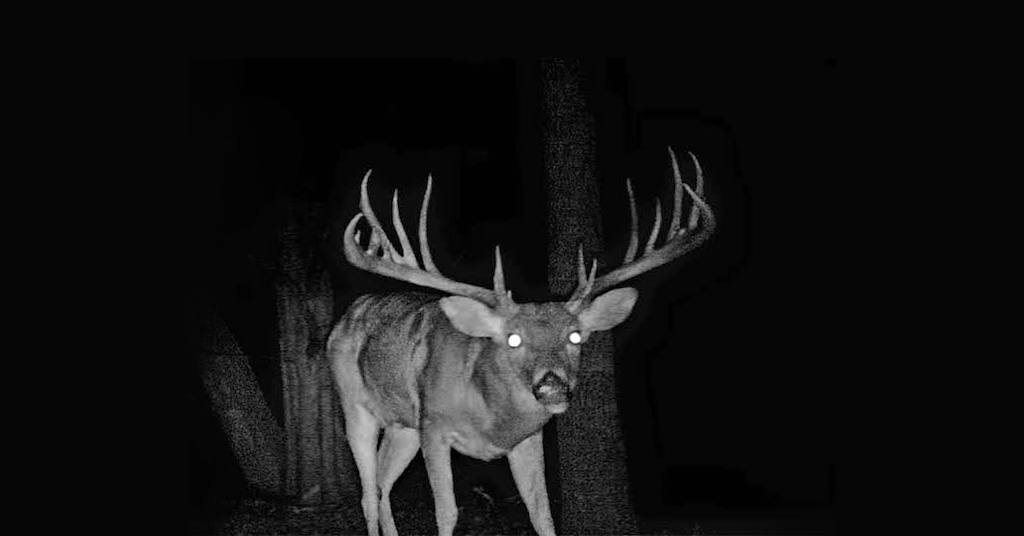So, here we go again. Yes, in today’s post is going to be about a fascinating line of products within the tactical gear world called wildlife cameras, a/k/a trail or game cameras.
I personally choose to call them trail cameras and, from this point on in this review, that is how I will refer to them – not to say I may, from time to time, use the other labels interchangeably and it will not make any difference at all.
Before I get into the nitty gritty of this review, I must say, this is yet another product which involves certain technological know-how, so, then again, I must, at the outset disclaim to you my loyal audience, that I am not a “techie,” but regardless, I will try my best to give you any such basic technical information as I possibly can within my realm of expertise.
As always, besides the technical data, the focus of my reviews shall always be more oriented to discuss equally important attributes and features of all the products we discuss.
And, as usual, you can count on my trying to give you as many pointers as I possibly can in whichever system, model, or item are best suited for your needs.
In a Rush? Here's the Quick List for 2024:
Trail Cameras - Everything You
Need to Know Before You Buy
What Are Trail Cameras?
As per my customary and traditional style, the very first item in my agenda today is to define in the most straightforward, most simple, and most uncomplicated manner possible the product we are about to review – in this case “trail cameras.”
As mentioned before, trail cameras a/k/a wildlife or game cameras are, just that, cameras that are strategically placed to take pictures and/or videos of wildlife without you being present.
I am often asked the question, what is the difference between game and trail cameras?
Tricky question!
Not really, trail cameras, game cameras and wildlife cameras are simply different names for the very same item: a camera, operated by batteries that captures images with lighting fast speed.
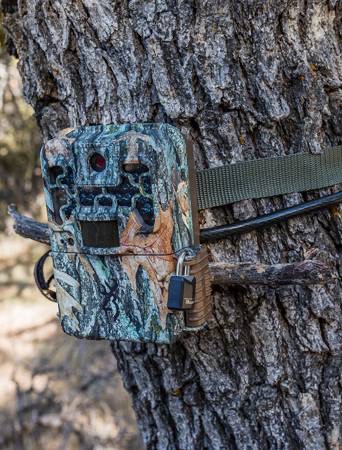
The main difference that separates trail cameras from most other conventional cameras is the fact that they are used without the presence of an operator or user.
Trail Cameras – A Brief Overview
Well, like I always say, first things first, at the end of the day, a camera, is a camera, is a camera; be it a trail camera or otherwise.
A camera is an optical instrument that captures a visual image.
This is as far as the simplicity goes.
Soon hereafter you shall see how some of the intricacies of this product-line can potentially become overwhelmingly complex for first-time buyers.
The most basic difference between your conventional photographic camera and a trail camera is that conventional cameras take for someone to push a shutter-release button [sometimes just shutter release or shutter button] to take the picture.
Vis-à-vis, trail cameras are, instead, triggered by motion of a target or object while pictures are stored internally to be viewed later.
While I will get into more detail later in this review, suffice it to say, for now, that trail cameras can document animal activity of rarely seen wildlife, which opens the door for quite a few uses and applications, again, some of which we shall discuss in detail further along our review.
With the help of trail cameras, you can document quite an array of animal activity, monitor animals without disturbing them, and hunters can scout the presence and movements of game animals.
Other than wildlife management, and/or besides the tactical-gear applications, nowadays, these cameras are also used for their added-value in security protection of your home or property – mind you an application which has become extremely popular in high demand paving the way for a multi-million-dollar industry in and of itself.
History Of Trail Cameras
While trail cameras today are more popular than ever, the ability to capture wildlife images has been around for quite a long time.
All of today’s major manufacturers of trail cameras should be thankful to outdoor-lover George Shiras III, who in the 1880’s invented the first trail camera.
Camera trapping was the name used for a method of capturing wild animals on film when researchers were not present and to many folks' surprise has been used in ecological research for decades.
In addition to applications such as hunting and wildlife viewing, research applications include nest ecology, detection of rare species, animal population analysis, size, and species richness as well as research on habitats and occupation of human-built structures.
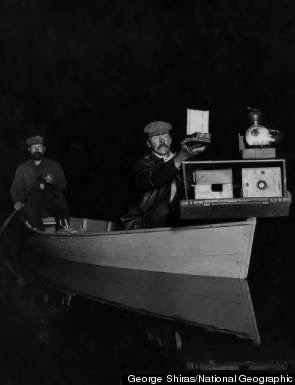
George Shiras III @ Whitefish Lake, Michigan, circa 1906 | Photo © George Shiras for National Geographic
All methods of camera trapping are meant to capture images of wildlife with as little human interference as possible.
Since the introduction of commercial infrared-triggered cameras in the 1990’s, their use and demand has increased exponentially.
Throughout time and with the advancement of applied technologies in the field of optics, this method of field observation [trail cameras] has become more popular among researchers than ever before.
We can also assert that hunting has played a rather vital role in the development of camera traps as used to scout for game, opening an immense commercial market for these systems.
How Trail Cameras Work
So, the essential components that make a trail camera work are its motion sensor, lens, infrared emitters, batteries, and an SD card.
The motion sensor triggers the camera to capture movement.
Motion sensors are either a passive infrared [PIR] sensor or an active infrared [AIR] sensor.
All told, however, a camera that takes pictures or video clips every time the wind blows would be useless, would it not? To that end, motion sensors are also equipped with heat detection.
The better the sensor, the faster it will detect movement and heat and, the faster it can detect movement and heat, the faster it will gather footage within the field of view.
Nowadays, the higher quality trail cameras also have a high-speed turnover time between photos.
Lens quality also makes a world of difference as far as the quality of shots captured.
The megapixel count and lens quality both are highly relevant to the quality of the photos taken.
Good lens should be clear, smooth, and not easily fogged or damaged.
Cameras that transmit infrared light emit little, if any, glow making their detection nearly impossible.
The more stealth you want your camera to be, the higher the quality of your infrared emitters should be.
Yet, one last feature of trail cameras deals with battery life – a topic which I shall discuss in further detail along our review.
Types Of Trail Cameras
Triggered and Non-Triggered Cameras
So, the earliest models of trail cameras worked using film and a one-time trigger function.
The film needed to be collected and developed just like any other standard camera.
But I must say, we have come a long way since those days.
Today, the advanced models utilize digital photography which can send photos directly to a computer and/or other intelligent devices, i.e., smartphones, computers, tablets, etc.
Some cameras can even be programmed to take multiple pictures after a triggering event.
There are also non-triggered cameras that will either run continuously and/or take pictures at specific time intervals.
The more common of these are advanced cameras triggered only after sensing movement and/or a heat signature.
Infrared beams are also used to trigger the camera.
Amidst all the novel technology is the emergence of videos in camera traps which allows researchers to record running streams of video to document animal behavior.
Notwithstanding the inherent functionalities, there are, from my perspective, three basic types of trail cameras as follows:
Non-Cellular Trail Cameras
Non-cellular trail cameras are more traditional and more affordable than their cellular counterparts.
Non-cellular cameras take a picture every time something moves in front of the camera.
Once the picture is captured, it is then saved to an SD memory card which can be retrieved later to view the images.
Some of the newer versions of non-cellular cameras can record short video clips so that you can watch animals’ behaviors throughout an area.
While non-cellular cameras are more affordable, they do require that you physically go to the site where the camera is mounted to retrieve the SD card and view the images.
Cellular Trail Cameras
Cellular trail cameras work similarly to other game cameras, capturing an image every time the sensor detects motion, however, in addition to storing the images on a memory card, cellular game cameras use cellular networks to upload images to the internet where they can be viewed on your smartphone, your laptop, your tablet, etc.
Some of the fancier models even allow you to change the camera’s settings through your phone from virtually anywhere.
Cellular cameras have become a convenient and efficient option for hunters who want to continuously monitor their properties.
Wireless Trail Cameras
A wireless trail camera typically uses a Wi-Fi signal to send the messages.
The drawback of this type of camera is that if you stray too far from the signal, you will lose the connection, meaning you need to stay at a close proximity to the modem to receive the images.
Though both wireless and cellular trail cameras eliminate the need for regular trips to and from the camera, they are not the same.
While cellular cameras use 4G cellular networks for transmitting data, wireless cameras, on the other hand, rely on a steady Wi-Fi signal to transmit the images to you.
Cellular vs. Wireless Trail Cameras
If there is one area where you commonly find technological misunderstanding, it has to do with the interpretation and/or the comparison between cellular and wireless trail cameras; how they operate and how they work, compared to one another.
While, again, I am not, by any means, technologically qualified to give you a detailed explanation, I will, nevertheless, try my best to chart the basic differences between these two popular technologies.
For starters, let us just say that the old blinding flash cameras have been swiftly replaced now by silent, HD video, audio, and black flash that will not alert animals in any way, shape, or form.
Let me also add that both types of cameras are wireless, different just in how they both work.
Wireless cameras, per se, refers to a camera with a Wi-Fi signal and only capable of sending images through a connection, while cellular means having the ability to send images via text and/or email at any time from anywhere.
While there are certain advantages using wireless cameras as such, hunters typically are more interested in cameras with cellular capabilities.
For this review, however, we will refer to wireless trail cameras as those that send imagery to your phone but understand that I am always referring to cameras with cellular capability, which work through a network and with a plan – a wireless trail camera, in other words, acts as a hybrid between a normal trail camera and a basic smartphone.
It has a plan, a SIM card, and can send a certain number of pictures depending on your preferences and payment plan.
They do this by using a normally up to 4G network coverage with a SIM card and a signal just as those used in cell phones.
Mind you, you do not need to use the same cell service provider for your trail camera as you do for your cell phone.
Trail Cameras – Uses and Applications
Simply put, trail cameras offer users great advantages in terms of their capability to record fully accurate data without disturbing the photographed animals.
Needless to say, the data recorded is far more superior than human observation with a naked eye.
General Usage
As far as I am concerned, the other major advantage offered by trail cameras is in their capacity for the owner/user to monitor extensive areas of a property, which would otherwise be impossible to achieve.
The fact that these devices operate continuously and silently are features that afford its users to manage all kinds of data in ways which, otherwise, would just not be feasible.
Trail cameras first are meant to minimally disturb wildlife, thus replacing the use of more invasive surveys and monitoring techniques such as live traps and release.
While I am somewhat restricted as to how much I can expand in discussing all the uses of trail cameras, I have, nevertheless, compiled a list of some of the most common applications of trail cameras as follows:
Note: While nowadays, the field of trail cameras used for home security and protection is widely popular, I am not including it in our applications today as this is a specialty beyond our main scope of interest relative to exclusively tactical gear applications.
Uses for Trail Cameras in Wildlife Management
Notwithstanding the multiple uses for trail cameras as noted above, still, I contend that probably one of [the] most useful and popular purposes for trails cameras happens to be their use in wildlife management, which entails several specific applications as we shall now discuss.
I will start by saying that, nowadays, when it comes to media storage capacity, there has been tremendous technological advancements to where camera’s battery life, once limited, have improved significantly whereby current trail cameras are capable of remaining operative for up to 150 days [depending on the specific model] and/or ≥ 1,000 pictures.
As such the uses in wildlife management have become endless.
As a point of reference, with a cellular trail camera, depending on the plan, you can purchase as little as 100 images per month all the way to 12,000 images.
If you hunt in an area that has good cell reception, then you can operate with a cellular trail camera as well.
For hunters, trail cameras allow scouting of multiple areas and do continuous monitoring at locations for specific game species such as white-tailed deer.
For the many wildlife enthusiasts around, trail cameras provide a way to document and view shy or rarely seen wildlife such as bobcats, and mountain lions.
Other than viewing or scouting, trail cameras can be a powerful management tool for landowners, land managers and hunters as well.
For example, information can be collected on animal movement, range size, demographic data [e.g., buck: doe and fawn: doe ratios], identifying nest predators, cataloging vertebrate diversity, among others.
I could go on and on as the list of wildlife management applications for trail cameras is, literally speaking, endless.
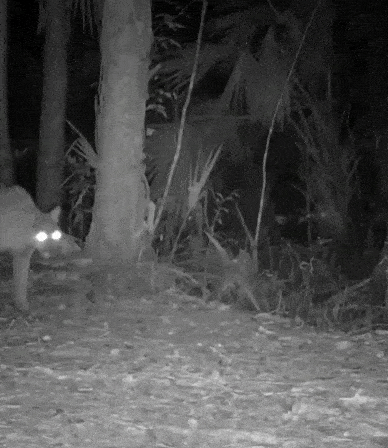
Suffice it to say, the use of trail cameras can be fun and educational at the same time, but it can also provide you with quite useful information to supplement a wildlife management plan.
For many of us, documenting demographic and production parameters of various species, trail cameras are a valuable source of information.
Often, I have seen property owners and managers be amazed at what their stored photography will show in terms of critical animal information, which just could not have been gathered in any other way than with a trail camera – need not go any further than that, do I?
What to Look For In a Trail Camera
Yes, trail cameras have indeed been a game-changer for many hunters, wildlife enthusiasts, nature researchers, you name it.
That said, however, with so many varieties of trail cameras on the market today and so many options to consider when purchasing one, more so if you are a first-time buyer, the question is: how do you choose one?
Well, that is, in fact, the essence of my review today, namely, to help you navigate through a myriad of considerations that can be overwhelming, albeit confusing enough to distract your focus on irrelevant data which may very well make your purchase decision that much more difficult.
To that end, I have compiled a list of features that should be at the forefront of your considerations.
Mind you, I am not enlisting these with any relative priority whatsoever – they are all just as relevant to your purchase in one way or another.
Regarding the features which I will now enlist, as you will readily be able to tell, those of you who are lucky to have a background in photography will have an edge or a value-added advantage over all of us who do not.
1. Image Quality
The so-called resolution or quality of the image seen on the camera is typically measured in megapixels [MP].
The more MP’s, the better the picture will be.
Basic trail cameras usually start at 2MP and go as high as 20MP.
Most experts recommend at least 7MP. For capturing game at night, however, nothing lower than 10MP is advisable.
One comment though, do not let megapixels be the driving force in your decision to buy one or another trail camera, instead, consider first what you will be using it for.
Higher megapixels will be great for outdoor quality photos, that said, however, megapixels are only as good as the lens of your camera.
2. Battery and power Options
This is, as you can well imagine, a critical feature to all trail cameras.
As far as power and batteries are concerned, trail cameras come with all kinds of different options which buyers should pay special attention to.
The average life of a good trail camera battery is approximately 30,000 photos, however there are countless variables that can affect the lifespan of batteries.
Trail cameras operate on three basic types of batteries: 1) Alkaline [standard], NiMH Rechargeable, and Lithium batteries.
My only recommendation, do yourself a favor and try to stay away from NiMH’s – not only are they more expensive, but they also just do not work well in trail cameras and most manufacturers advise against them.
That said, however, I know of many who still prefer the undeniable convenience of recharging – your call!
I personally prefer lithium over alkaline only because the lithium type can operate without failing in colder climates, ideal for outdoor applications.
Whichever battery you end up choosing just to try to anticipate your expectations in terms of life expectancy relative to usage and applications.
Last, always go for cameras which have a battery-life indicator.
3. Trigger Timing
So, trigger speed is defined as the amount of time elapsed from when a trail camera first detects motion until the camera captures a picture of what originated the motion.
Typically, trigger speed has two main options: 1) Optimal, and 2) Fast.
“Optimal '' takes higher quality images while “Fast” takes photos more quickly.
Trigger time in most trail cameras can range from 0.1 seconds to 0.5 seconds.
4. Memory
Memory in trail cameras which are not cellular, or wireless is measured in Gigabytes, and it refers to the number of photos or videos that your camera will be able to store.
Trail camera storage on an SD card can range anywhere between 8 GB to 32 GB.
Should you decide to purchase a non-cellular camera, just make sure to check how many Gigabytes you have in the model you have chosen.
5. Detection Range and Field of View
Detection range is defined as the farthest distance an animal can be from the camera to trigger a photo.
The longer the range the better the camera.
The average range for most trail cameras is between 60-70 feet and can be as far away as 120 feet.
Field of view is another essential element to take note of which will provide the width of the angles which the camera can detect movement.
A wider field of view will aid you because the wider the shoot the longer time the game will be in camera view.
6. Time-lapse Mode
Time-lapse mode takes pictures at specific intervals or times of the day despite triggers.
Nowadays, many models give you the option on how often a camera takes a picture and how long it will operate in the time-lapse mode.
This feature will allow you to monitor animal activity during specific times of the day.
7. Time-Stamp
Some trail camera models feature a time-stamp mode which could be a rather useful tool when you want to collect information about specific times of the day, year, or season as animals access your property.
This feature can be especially useful for birdwatchers to monitor migration of certain bird species.
8. Lighting Options
Most of us, I venture to say, have taken pictures with a regular camera at some point throughout our lives, and if you have, we know one of the most fundamental criteria for an excellent quality photo has to do specifically with lights and/or lighting conditions.
This principle is even more relevant in trail cameras, as many of their photos will be taken at night or in the dark, where the quality of the pictures may be adversely affected.
There are basically just two main types of lights as follows: 1) traditional light flash and 2) Infrared or IR.
Typically, the flashlight type comes as part of the least expensive trail cameras, however they are pretty good for getting close-up full color photos.
The downside to this version is that their light can frighten the animals, thus can spoil your picture.
9. Infrared Options
Many first-time buyers are under the false assumption that all infrared cameras are created equal.
And that is just not the case.
In most trail cameras there are three basic types of infrared IR lights options to choose from as follows: 1) Black Infrared or “No-glow”, 2) “Low-Glow”, 3) “Red Glow.”
The Black Infrared or No-Glow camera does not produce visible light to the human eye when taking a photo or video at night.
It is invisible to the human eye, great for security surveillance and can work well for wildlife as well.
The No-Glow option emits no visible lights, so subjects will be unaware of the camera at nighttime, thus being the preferred choice of hunters.
The advantage of the No-Glow option, however, is typically offset by the lesser quality of night images and/or pictures taken in dark settings.
The Low Glow and the Red Glow, both are hardly visible to the naked human eye, producing a barely visible or faint red glow from the IR emitters when taking pictures or videos.
The Low Glow works well for surveillance and offers slightly brighter pictures than the No Glow.
The Red Glow version, on the other hand, shoots brighter, clearer night photos [because more light is emitted].
They happen to be excellent for wildlife use and better for species identification.
On the average they are less expensive than No-Glow cameras.
10. Motion and Heat Sensors
As I have mentioned before, typically, trail cameras are triggered to take pictures by motion sensors, however, some are coupled with heat sensors as well.
When choosing the model that best suits your needs, just bear in mind to define your specific needs.
Heat sensors are not going to pick-up cold-blooded animals, so there is no reason for you to have these.
Vis-à-vis, if you want to monitor warm-blooded mammals, you definitely need a camera that has a heat sensor.
11. Budget and Price
Is obvious, when it comes to price-points, trail cameras cover a wide-range of prices, so, it all boils down to how much you are willing to spend.
Trail camera prices range from as little as $80.00 to as high as $10,000 and over.
One of the most important criteria relative to price tags is the detection range or the capture distance of an animal from the camera to trigger.
The longer the detection range, the higher the cost and vice-versa.
My best advice to you, regardless, as I always do in this topic of price, is to make sure before you launch your purchasing journey to specify and define your mission, your usage and/or your application.
Once you have done that, it will be easier to decide which features you need or do not need, which inevitably, at the end of the day, translates into potential savings in your investment.
In addition, and notwithstanding the model[s] you are interested in, I would also highly recommend for you to set yourself a budget.
Try and put a limit as to how much you want to spend or you need to spend.
I have seen many friends who end up over-buying while spending on features and gadgetry that are not really needed for a specific application.
By setting yourself a spending limit, you will end up making a wiser investment, regardless of which trail camera you end up buying.
Common Myths About Trail Cameras
As we head into my top trail camera picks in the next Section, and as I have already given you a list of foremost considerations above, might as well also forewarn you of common myths when purchasing a trail camera – these can be just as useful, maybe even more, than all the above captioned pointers.
Myth #1 - More Megapixels = Better Pictures
The absolute most common mistake made when buying a trail camera is the assumption that more megapixels is always equal to better pictures.
Absolutely not.
Truth is that most megapixel ratings on trail cameras are interpolated.
In lay terms, interpolation is enhancing the resolution of an imaging device via software to a higher resolution without really increasing the megapixels per se.
Without getting too technical about it, interpolation really does not add megapixels that would make for a better-quality picture, instead, it splits pixels in a way that neither increases the quality of the pictures nor allows you to zoom in to view additional details.
Bottom line, interpolation, achieved via software is a deceitful way to pretend a false increase of megapixels, used by companies as a gimmick to mislead many camera buyers into buying their product.
Myth #2 – Alkaline Batteries Work Great in Trail Cameras
I kind of touched on this topic before, but I find it well worth reviewing it again.
Granted, batteries are a critical feature of all trail cameras.
Issue being, there are all kinds of power and batteries offered as part of your trail camera package.
While alkaline batteries are less expensive and do work well in certain situations, they are not ideal for trail cameras.
First, the voltage level of alkaline batteries produces a gradual decline in flash illumination, with each new photo coming out darker than the last one.
As I mentioned before, I personally prefer lithium batteries.
Myth #3 – You Must Be a Tech Genius to Operate a Trail Camera
Complete fallacy.
Most trail cameras can be set-up in minutes – if not seconds.
All reputable trail camera manufacturers use slightly different set-up menus, however all are relatively simple and easy to follow along.
Do not let yourself be misguided into believing this is a science for which you need to go to school. It is not.
Anyone with common sense can set up a trail camera in no time.
Programming your camera is as simple as flipping a few toggle switches.
Myth #4 – View Trail Camera Pictures with a Digital Handheld Camera
So, regretfully, this rarely works.
To be sure, handheld digital cameras like the ones you use to snap your family photos, just do not work well with trail camera photos.
While on occasion you may get one to work, for the most part digital cameras will “lock” the SD card from the trail camera.
Just please do not try it.
Trail cameras save their photos to the SD card which you can then insert into your computer or laptop.
Best Trail Cameras - Our Top Picks
So, as always, we have now come to the Top Picks Section, which is meant to put it all together in some cohesive way, as to make your purchasing decision somewhat more effective in terms of the money you will spend in the purchase of your trail camera; be it the first one or not that you buy a trail camera.
As you well know, if you have read any of my previews reviews, my job here is to organize your purchasing options in a way that makes it easier for you to shop around.
To that end, once again, I will have decided to breakdown my picks into three major categories as follows:
Note: Please be aware that it would be impossible to try and produce a list with combined priorities. For the sake of this review, the top priority for itemizing all my picks uses the price-point as the principal criterion. It will be there for you to focus on the features offered within any given price range.
Best Budget Friendly Trail Cameras in 2024 [$100 or less]
1. COCOCAM Trail Camera
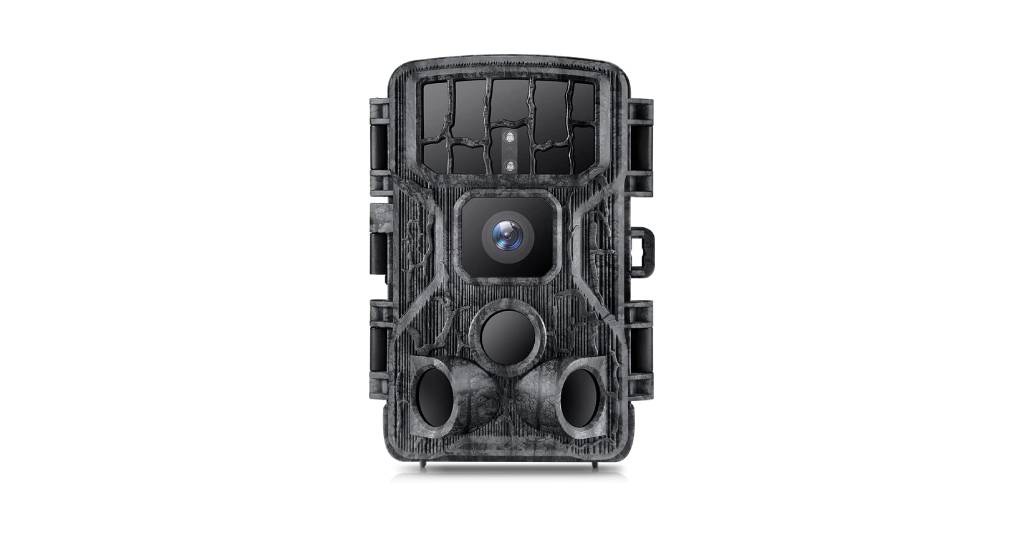
COCOCAM Trail Camera
Specifications
ConClusion
The COCOCAM Trail Camera comes with a built-in WiFi.
You can monitor the real time image or download the photo/video by APP "Hunting 4K" which can be downloaded on your smartphone or tablet (Android and IOS system).
The WiFi range is approximately 15 meters, and it supports auto WiFi off.
This camera boasts a super-fast 0.2s trigger speed with 3pcs PIR sensors greatly increases the detection sensitivity which makes this wildlife camera triggered in a shorter time of 0.2S with greater distance up to 20 meters (65 feet).
The level of PIR sensitivity is divided into High/Normal/Low.
Well, at $60, there is not much more you can ask for.
Do yourself a favor and check this one out.
2. Vikeri Wide Angle Trail Camera
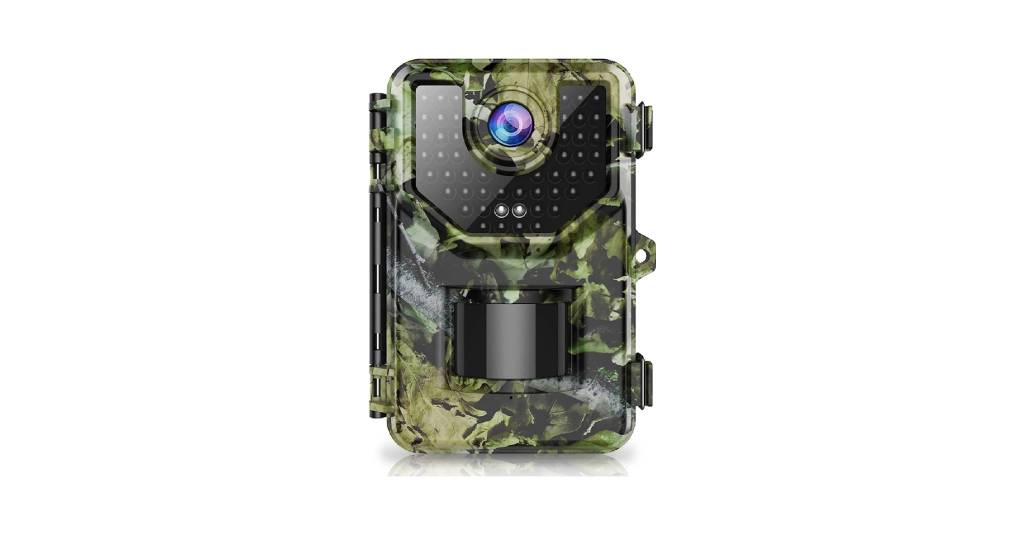
Vikeri Wide Angle Trail Camera
Specifications
ConClusion
So, what can I tell you? This is just a great buy that will not break your bank.
At a price point of $66 you just cannot go wrong, can you?
This one takes a mini-SD card, so you will probably need one of those mini SD adapters to put the card and view on your computer.
The Vikeri Wide Angle Trail Camera takes great nighttime black and white pictures and videos as well, and great daytime color pictures and videos.
I just think this one is a great investment where you can get a lot for your dollar.
3. GardePro A3 Trail Camera
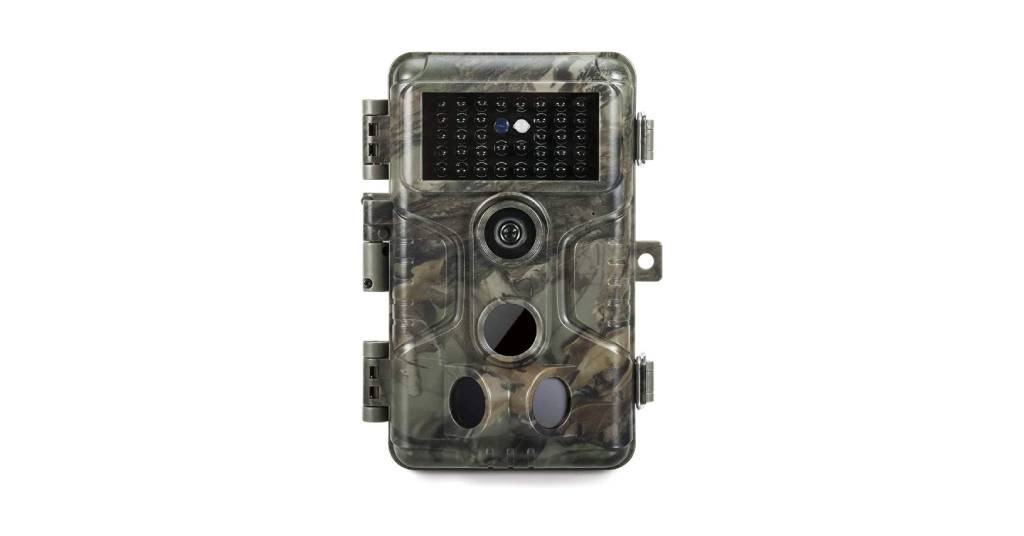
GardePro A3
Specifications
ConClusion
To be honest, at a price point of just $70, the GardePro A3 comes full of features found in the more expensive counterparts.
The night vision distance and clarity on this camera are far superior to many other cameras including some more expensive models.
Day pictures are also quite crisp and clear.
This camera features an Advanced H.264 1080P@30fps video recording with sound, replay more clearly, smoothly and save up to 80% memory card storage compared to MJPEG videos used in almost all trail cameras.
I happen to own one myself and I highly recommend you check this one out before making your final decision.
4. Browning Strike Force Extreme
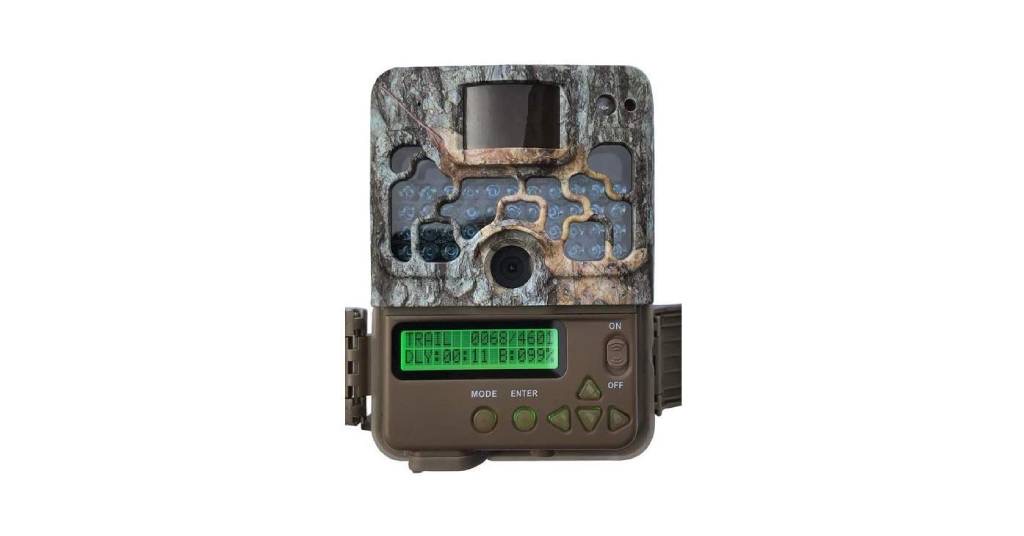
Browning Strike Force Extreme
Specifications
ConClusion
So, the Browning Striking Force Extreme is an all-around excellent camera offered at a very affordable price of $100.
The name Browning in this industry is synonymous with quality cameras.
The 80-foot detection range, paired with the 0.6 second recovery time, enables you to pick up more movement at a greater distance.
Whether the camera is in photo or video mode, the images come out crisp and clear.
My only problem with this model is I wish it offered a viewing screen as some of the others in the Browning line.
5. Alpha Cam Premium Hunting Trail Camera
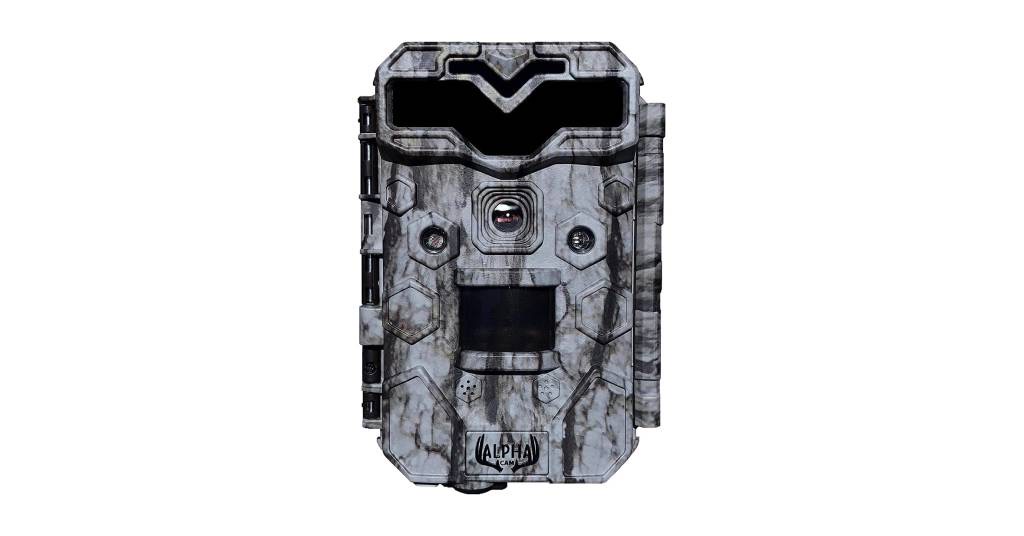
Alpha Cam Premium
Specifications
ConClusion
Well, I honestly think the Alpha Cam Premium takes it to another level in the price range of $100.
With 30 megapixels, weatherproof rated for IP67, among others, this camera is one step ahead of many others.
This camera will show you wildlife in the most vivid way imaginable.
And if you need it even more lifelike, the 1080p video shoots at an impressive 30 frames per second, which makes this camera stand on par with some much more expensive counterparts.
This is to me, by far, one of the best options around at this very affordable price point.
Best Mid-Range Trail Cameras in 2024 [$100 - $200]
1. Stealth Cam G42NG Trail Camera
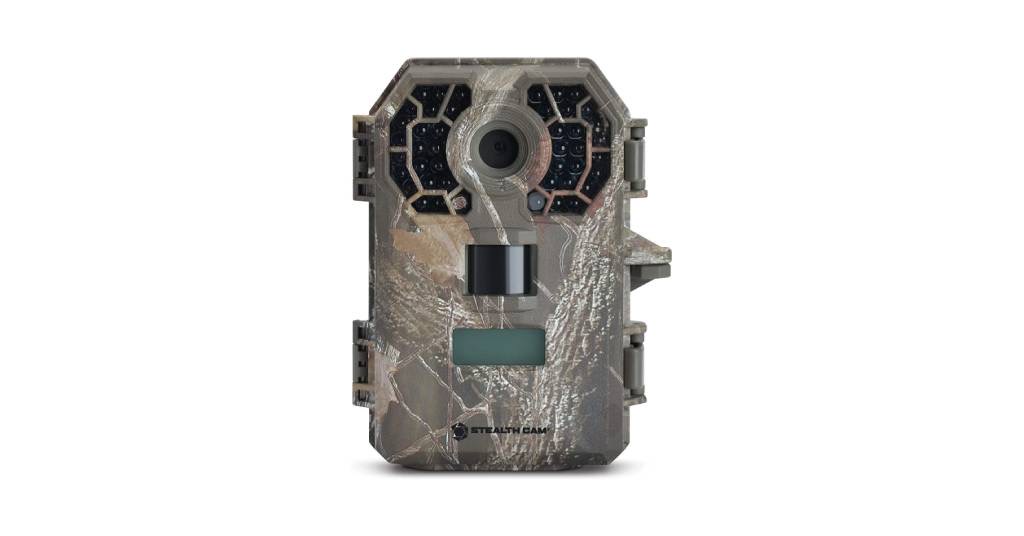
Stealth Cam G42NG
Specifications
ConClusion
This camera, the Stealth Cam G42NG, comes loaded with the latest software.
It takes rather good pictures day or night. The video option works well too.
I think this one offers a lot of value for the money as compared to some of the more expensive models.
The 180 seconds of video recording time comes as an added-value feature.
This camera is well constructed and should last you a long time.
Features a 100-feet IR range for night photography that will not spook game.
Records date, temperature, moon phase, and camera name. Requires an SD memory card (up to 32 Gb, included) and 8 AA batteries.
At $120, you cannot go wrong with this one.
2. Spypoint Force-Pro 30MP HD Trail Camera
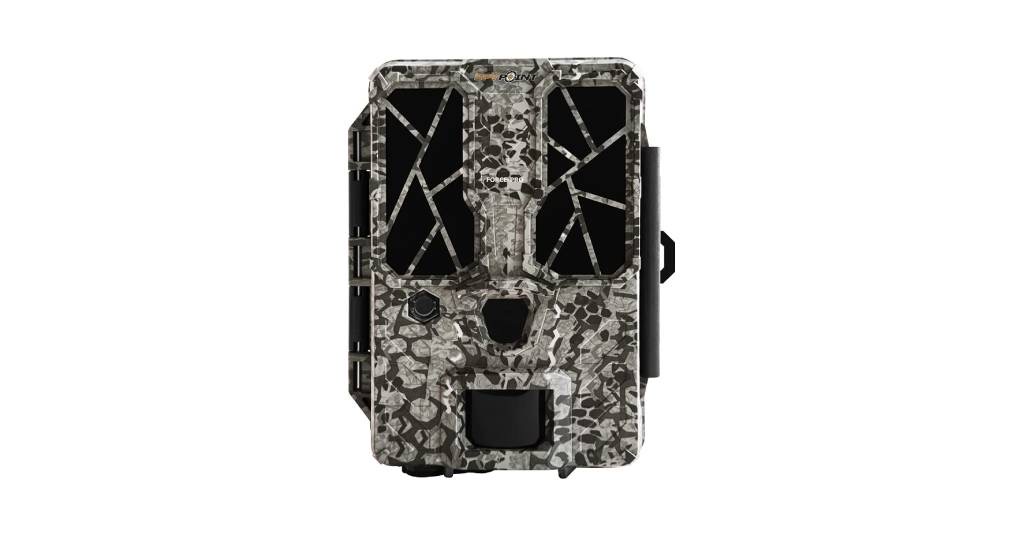
Spypoint Force-Pro
Specifications
ConClusion
So, as you well can tell, the Spypoint Force-Pro 30MP HD Trail Camera is loaded with features, which will ensure the capture of even the most elusive game.
At a price point of $130 this camera has all the bells and whistles that you want for a hunting trail camera.
The motion detector comes with four basic modes, low, Normal, High, and Auto allowing for great capturing sensibilities.
It has date, time, moon phase and temperature stamps.
Its multi-shot mode capability accommodates up to 6 photos for detection, configurable in settings.
3. Covert WC30 LTE Cellular [Verizon or AT&T] Trail Camera
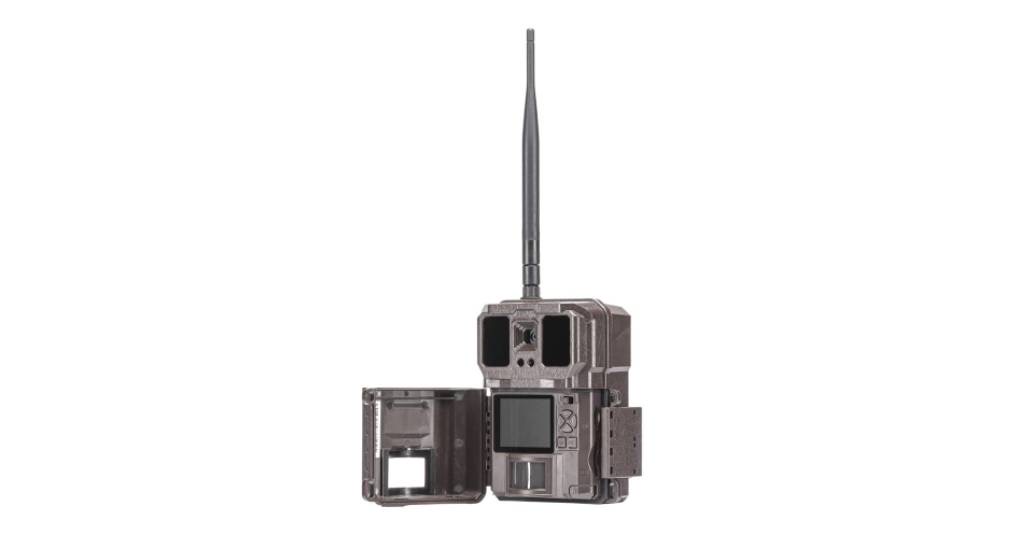
Covert WC30 LTE Cellular
Specifications
ConClusion
Overall, I think this is a great price-point for a trail camera.
The Covert WC30 LTE Cellular has mastered the battery consumption issue.
Because this camera works over LTE networks, there is a subscription plan you must have to use it.
They have different packages depending on how many photos you would like sent per month.
The camera quality on the HD photos is quite good and the night vision works simply fine.
If you are looking for a camera that you can just set and forget about, this is it!
4. Browning Spec Ops XR Trail Camera
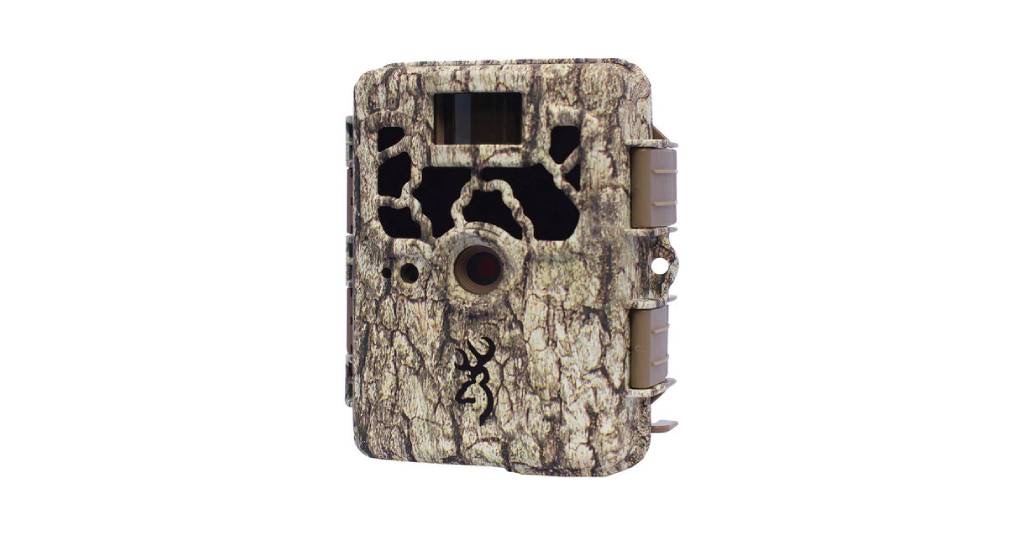
Browning Spec Ops XR
Specifications
ConClusion
The Spec Ops Extreme FHD camera features high quality 20 MP images and 1920 x 1080 Full HD video with sound that you can play back on a 60-inch TV without losing any video clarity.
It also features an 80-ft detection range as well as invisible "Night Vision" IR Illumination with adjustable IR flash modes for optimum picture control at night.
The built-in 2" color display allows you to preview exactly where your camera is aimed in the field as well as check your images and videos from your camera.
Lastly, is the ability of the Spec Ops Extreme FHD to work with SDXC memory cards up to 512 GB.
This camera is perfect for surveillance of game animals that are easily spooked as well as a great security camera around your home or hunting property.
Best High End Trail Cameras in 2024 [$200+]
1. Stealth Cam DS4 MAX Trail Camera
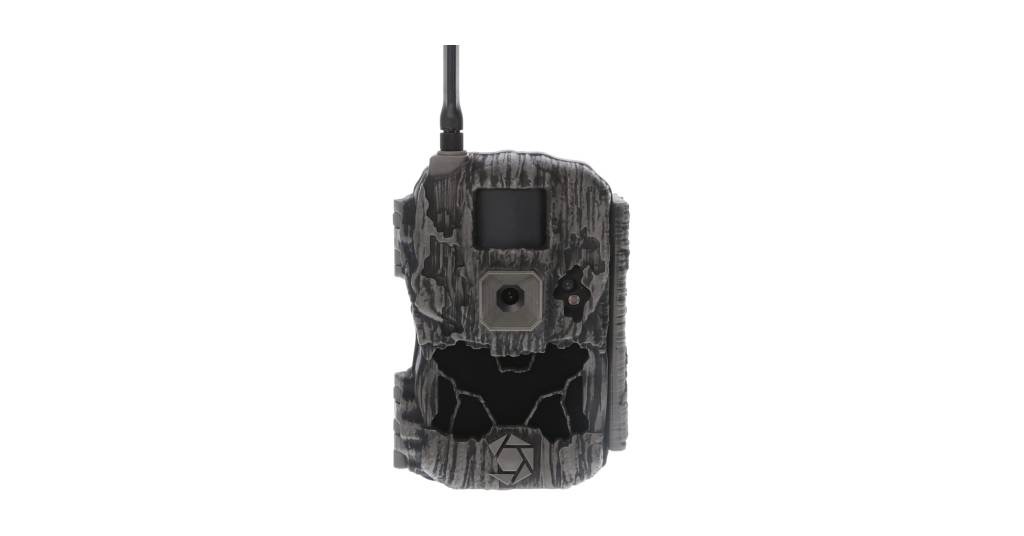
Stealth Cam DS4 MAX
Specifications
ConClusion
I am particularly fond of the Stealth Cam DS4K Trail Camera.
This camera is easy to set up and has amazing video quality and fast trigger time.
It takes great photos and videos, be it day or night.
I highly recommend this model for wildlife research and surveys.
The 4K Videos during the day are particularly superior quality and the night vision IR Camera works sufficiently well to see all the animals clearly and be able to identify them.
Make sure to check out this one before you make your final decision.
2. Bushnell Core DS No Glow Trail Camera
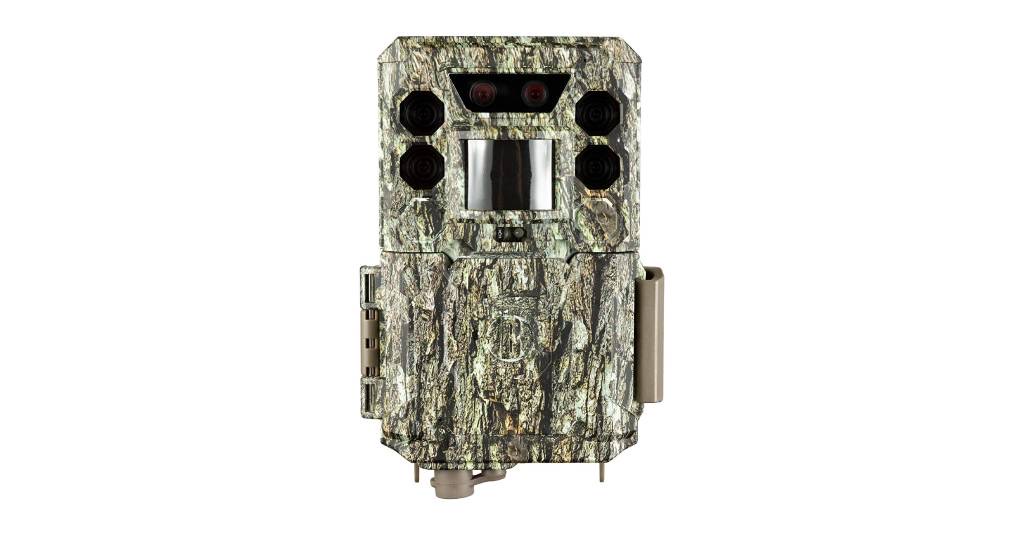
Bushnell Core DS
Specifications
ConClusion
From my perspective, the foremost criterion with this model is the fact that it is manufactured by Bushnell, who I consider one of the top manufactures of all optical systems in the industry.
The one outstanding feature in this Bushnell Core DS No Glow Trail Camera is the fact that it includes dual sensors: one for day and one for night.
It can capture Full HD video at up to 60p, with audio too, and having 30MP at your disposal with a trigger time of 0.2 seconds pretty much seals the deal.
This is everything you need a trail camera to be.
At a price-point of $220 and with the name Bushnell, this one is an easy decision.
3. Bushnell CeluCORE 30 Trail Camera
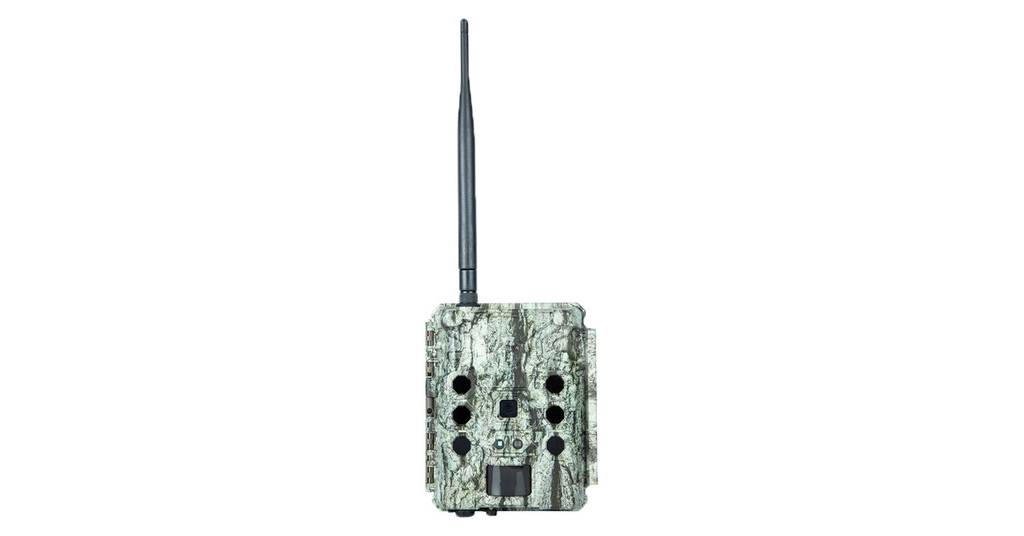
Bushnell CeluCORE
Specifications
ConClusion
The CelluCORE automatically sends the images it captures to your smartphone or tablet, where you can view, sort, and manage them remotely.
The camera takes 30MP photos and 1080p video at a smooth 60 fps and transmits them using a no-contract Verizon data plan, starting at $10 per month.
Your still images will have a time-stamp with useful information including date, time, temperature, and moon phase.
In addition to being sent to your phone, images and videos can be saved locally on a user-supplied SD card up to 32GB, and you can review content in the field on the built-in 3" color view screen.
4. Spypoint Solar Dark Trail Camera
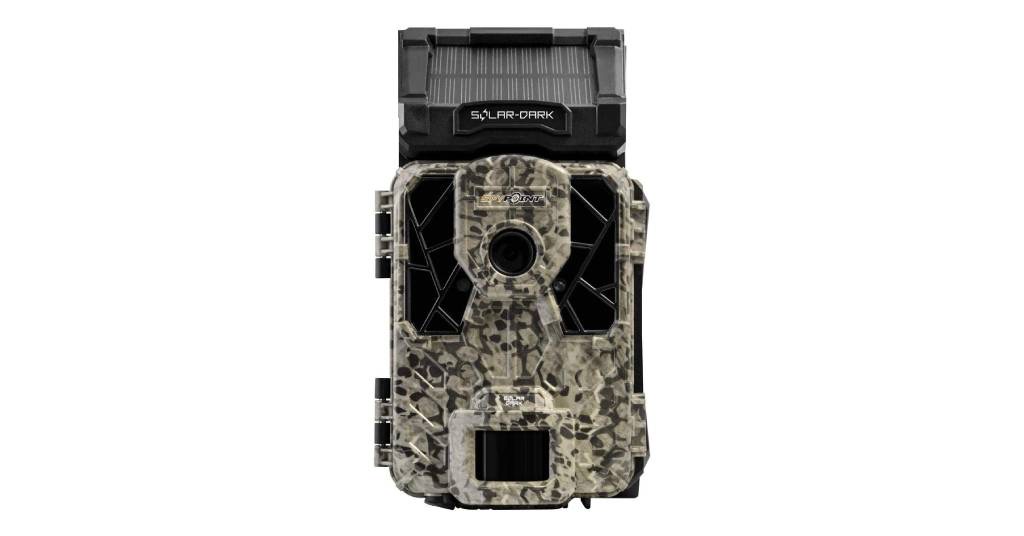
Spypoint Solar Dark
Specifications
ConClusion
Yes, the Spypoint Solar Dark Trail Camera is a pricier camera at $310.
Reason you pay more is principally as you will not have to buy batteries again.
The lithium battery and solar panel is setting a new standard for battery life and saves the hunter hundreds of dollars in batteries and travel over the life of the product.
This camera also features the HIT flash system which allows you to choose the flash setting that works best for where you place your camera - from a no-glow setting for maximum concealment, optimal for a balanced, lower-glow functionality, boost for a traditional low-glow flash, or blur reduction to reduce the motion blur of night-time photos when game is on the move.
5. RECONYX HyperFire 2 Covert IR Trail Camera
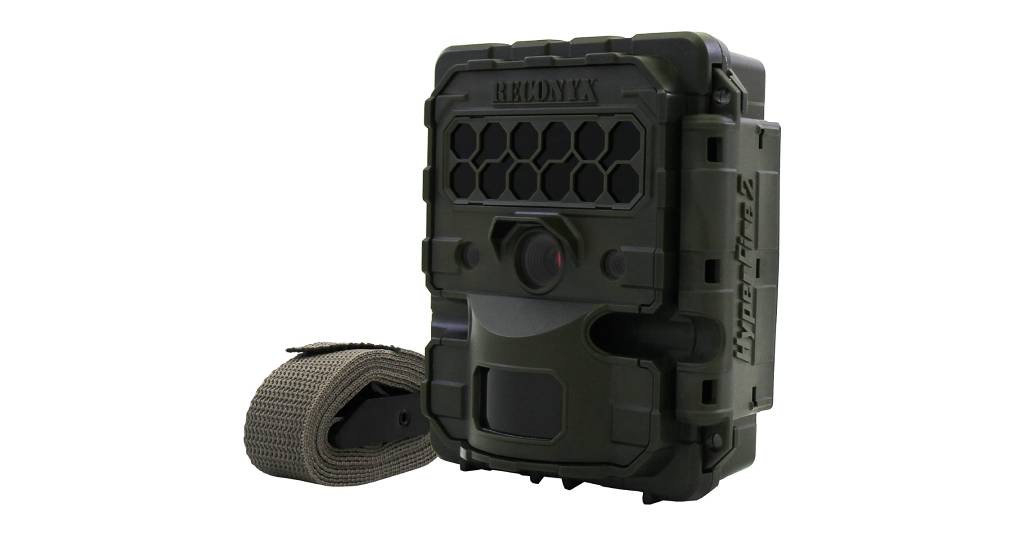
RECONYX HyperFire 2
Specifications
ConClusion
So, friends, at the top of all my picks today, I have the RECONYX HyperFire 2 Covert IR, and I will explain why.
First, when it comes to trail cameras the Reconyx brand ranks right at the top with the best, having been in the business for over 15 years.
The RECONYX HyperFire 2 Covert IR has been a game-changer.
With the HyperFire 2 HF2X, you get a super-fast ¼ of a second trigger speed.
It can shoot a maximum of 10 frames per trigger.
The HyperFire 2 features a super long battery life of 16 to 24 months.
My favorite feature though is that it shoots color pictures during the day and can shoot infrared monochrome images in the dark.
The 3-megapixel sensor on the HF2X produces sharp images with natural color rendition.
It also captures a good amount of detail in the shadow areas.
All said, this is a great game camera, which hunters, wildlife enthusiasts and photographers all just love to have.
Summary and Conclusions
So, we have come to the end of our journey and, as you well can tell, trail cameras are quite a fascinating product line in the tactical gear world, if yet rather complex as well.
If you really think about it, at the end of the day, trail cameras are, just that, a photography camera.
Photography is the art, application, and practice of creating durable images by recording light, either electronically by means of an image sensor, or chemically by means of light-sensitive materials such as photographic film.
And the instrument of choice used for taking photography is a camera – an optical instrument that captures a visual image.
In the years since cameras have been around, the technological advancement has grown exponentially, to where we now have all kinds of different systems available in the marketplace – not to mention the limitless number of features nowadays offered by this incredible industry.
The fact that trail cameras, per se, are a part of this extensive universe, just make them inherently complex as well.
When it comes to technology, trail cameras, wildlife, or game cameras, whichever name you choose to call them, have been just another beneficiary from the above-referred techno revolution to where, today they [trail cameras] boast all kinds of added-value features, making them a most desirable system to own for quite a diverse variety of users and applications, i.e., hunters, wildlife enthusiasts, nature lovers, landowners, homeowners, military, to mention a few.
As always, I use this Section to summarize some of the most prominent issues covered before you embark on your purchasing journey, albeit, easier said than done considering the complexity of critical issues we have covered.
That said, nonetheless, buying a trail camera for the first time takes some serious planning.
My very first advice to you is to try and define your use or application plainly.
Folks that are into hunting need distinctive features than, say, folks that are into just managing wildlife or nature – vastly different applications demanding quite distinctive features.
Once you are set on your specific use or application, then you must decide how many cameras you need for your mission, which will vary accordingly, based on desired coverage and distance ranges.
After you have narrowed down your options based on your mission, and only then, you should begin your considerations as to which features you really need or do not need.
Features such as desired detection range, battery life, megapixels, video resolution, lighting and glow, trigger speed, are all in the realm of considerations you must think about before making that all-important final decision on which camera[s] to purchase.
While most of my reviews are geared to first-time buyers for the most part, hopefully today, I was also able to help some of the more experienced buyers as well.
One way or the other, I just hope that today’s review served to meet my initial objective, that of making your purchasing journey simpler if yet a wiser and more effective purchasing decision of this fascinating trail camera product line.
Meantime, as you begin your purchasing journey, I wish you the best of luck in finding that system which best suits your needs, as, if you do, it will also give me a complimentary sense of accomplishment in being an instrumental part of your purchasing experience.
Frequently Asked Questions
As I have said many times before in previous reviews, this FAQ Section happens to be one of my favorites, only because we all learn together from each other.
Today, however, I am changing course a little only because, most of the questions I am typically asked about trail cameras, I have, in one way or another, covered or answered throughout this review.
That is, all except one which I think is crucial and essential to today’s topic.
I am referring specifically to:
Trail camera placement
As incidental or trivial as this topic may at first appear, believe me, it is not – all the contrary.
Think about it this way, no matter how sophisticated your trail camera may or may not be, if not placed correctly, it will completely defeat the purpose, right?
As such, rather than attempting to offer a short answer I will, instead, try and give you a more detailed overview on this especially important topic which can only help you make the right decision as to how and where to place your trail camera[s}.

